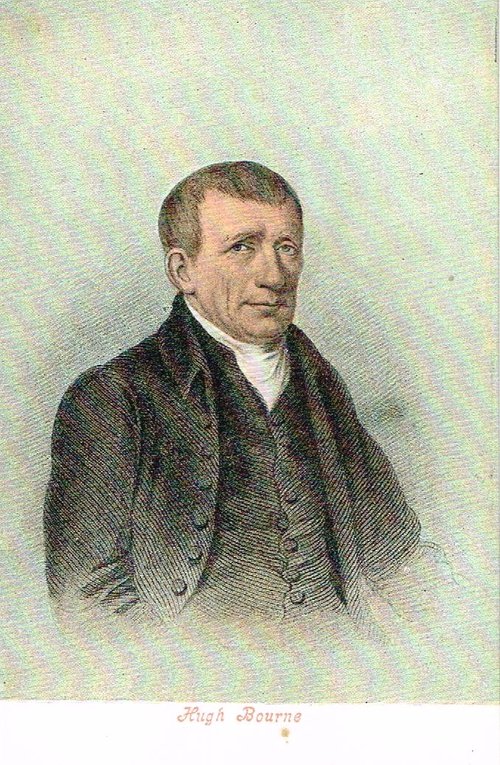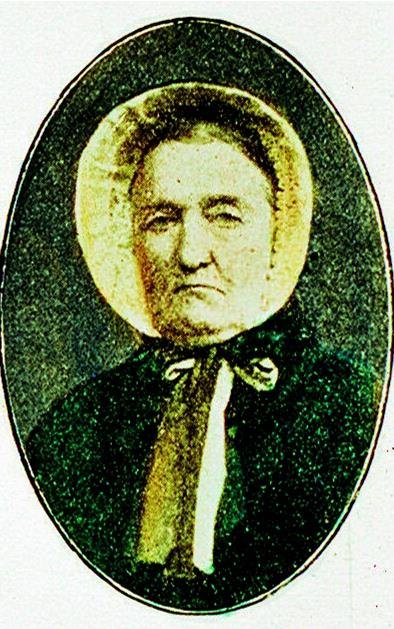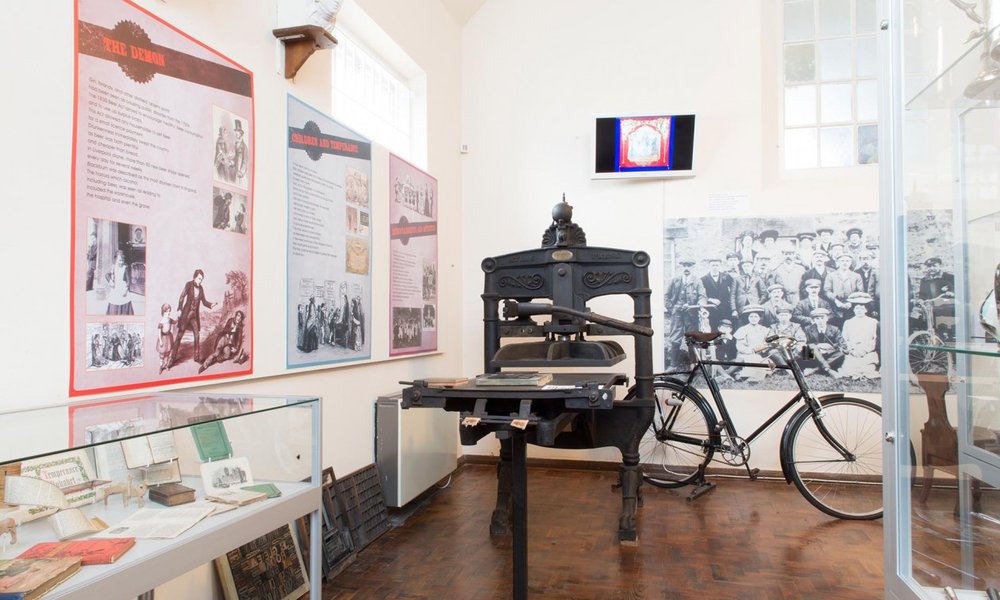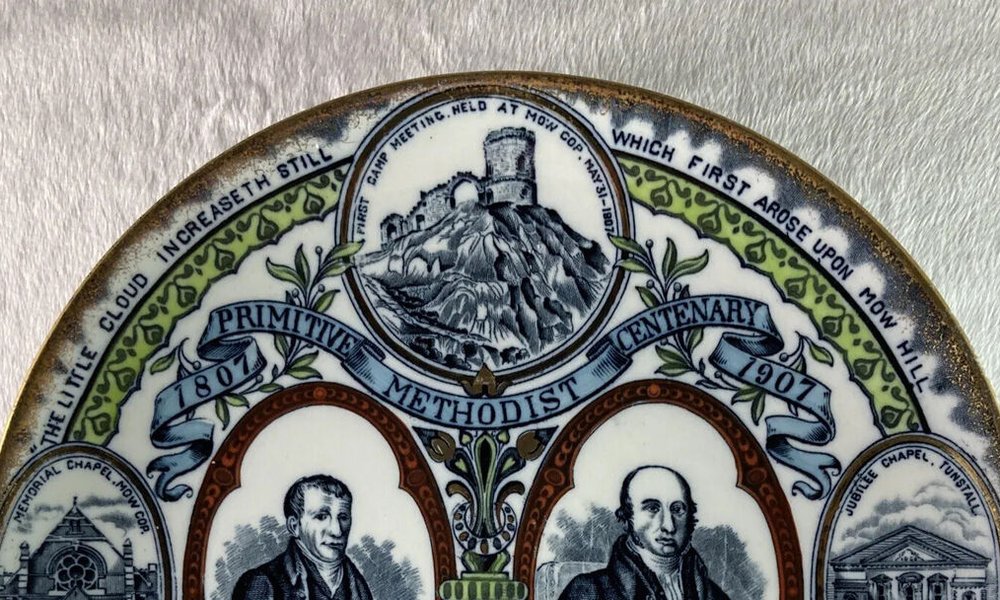A History of the 'Prims'

This new denomination developed from early nineteenth-century revivalism, which was localized in a prayer meeting at Harriseahead, Staffs, in 1800. The American Lorenzo Dow, visiting the area, introduced the idea of Camp Meetings, the first of which was held at Mow Cop in 1807. This fired the imagination of Hugh Bourne and other revivalists, but the WM Conference judged the meetings 'highly improper' and disclaimed all connection with them. Bourne's association with the revival led to his expulsion from WM in 1808. William Clowes was drawn into the movement and soon had a following (known as 'Clowesites'). After his expulsion in 1810, he and his followers joined with the Camp Meeting Methodists.
Two events in 1811 marked the birth of a new denomination: Bourne issued a ticket of membership and the first PM chapel was built at Tunstall. The following year the name 'Society of Primitive Methodists' was adopted. (The term had earlier been used in a more generic sense, e.g. by William Hammet in Charleston and by John Pawson in his letters.) A preaching plan for the Tunstall Circuit, printed in 1812, virtually confirmed the (self-styled) 'Ranters' as a separate denomination. The Conference of 1829 approved a Deed Poll, giving the denomination legal status.
The movement was at first confined to the Burslem area, but after 1816 it grew more rapidly and under the guidance of Bourne and Clowes missionary activity escalated. Clowes missioned Hull in 1819 and the first PM Conference was held there in 1820. By 1824 there were already 72 circuits, grouped in to four Districts: Tunstall, Nottingham, Hull and Sunderland. Initiated by theTunstall and Shrewsbury Circuits in the 1820s, Primitive Methodism spread into predominantly rural parts of southern England from focal points such as the villages of Motcombe and Brinkworth, in Wiltshire and Shefford in Berkshire; while in the 1830s the Hull Circuit established missions along the south coast and on the Isle of Wight.

Outstanding missionaries to other parts of the country included Thomas Batty in Weardale, Thomas Russell in Berkshire, William Braithwaite in Lincolnshire and Robert Key in Norfolk. There were many women who served as travelling preachers, hired local preachers or local preachers. Outstanding among these were the pioneer Sarah Kirkland and the long-surviving Elizabeth Bultitude.
A Book Room was established at Bemersley in 1820, which eventually moved, along with the connexional offices, in 1843 to Holborn Hall, London. A connexional Magazine and other monthly publications became part of its output. There was a series of hymn-books, the Hartley Lecture, a weekly newspaper and books by prominent writers in the connexion. Ministerial Associations in the 1850s were a first step towards formal ministerial training. Following two years of ministerial training at Elmfield College, a theological institute opened in Sunderland in 1868, to be succeeded by Hartley College in 1881. Elmfield College, York, Bourne College at Quinton, Birmingham and the short-lived Ladies College at Clapham were educational establishments. Orphanages were opened at Harrogate and Alresford. They became part of the National Children's Home after Methodist Union in 1932.
Reported membership rose from 7,842 in 1820 to 186,466 in 1900. The period from 1829 to 1850 was one of rapid expansion. Circuits mushroomed throughout the country and it was the leading circuits, rather than the Conference, that took the initiative through their 'Branches' and 'Missions' for the new outreach. At the time of the Religious Census in 1851 Primitive Methodism was strongest in the northern half of England and in parts of Shropshire and Cheshire. It was absent from East Cornwall, Devon, East Somerset, south-eastern England, Berkshire, Sussex, parts of Kent and most of Essex (except the north-east).
Until 1876 the Conference was made up of only about eighty members, with four lay representatives to two ministers from each District. The strength of PM lay chiefly in the north - Yorkshire and Co. Durham; but it also flourished in the agricultural areas of East Anglia and parts of the south, chiefly among the lower classes, but as time passed with a sprinkling of successful manufacturers and businessmen. As Districts and Circuits were defined, chapel building became a dominant activity. The towns built on a grand scale; the villages erected utilitarian, box-like chapels. PM moved from an aggressive type of evangelism to a distinctive ministry of preaching, buttressed by prayer meetings, open-air witness and later the Christian Endeavour societies. Laymen were highly influential at connexional level and occasionally laymen (Thomas Bateman and William P. Hartley) were elected President of the Conference. The Vice-Presidency (from 1872 on) was open to ministers or laymen, but after 1883 was almost always held by a layman.
The Conference of 1898 set out the denomination's 'credentials' for being considered a Church. It recommended that the word 'Church' should be used instead of 'Connexion', and this was implemented in 1901, e.g. on the class tickets. By 1900 the national membership was around 200,000 and three quarters of its chapels were rural.
Primitive Methodism was the most theologically conservative of the branches of Methodism that came together in 1932, despite the influence of A.S. Peake on generations of its ministers. At the time of Methodist Union there were 222,000 members with over 1,000 ministers and nearly 13,000 local preachers.
For a time the Primitive Methodists had an Irish mission, mainly in Ulster. In 1832 the Shrewsbury Circuit sent William Haslam to Belfast and the Preston Brook Circuit sent Francis N. Jersey to Dublin, from where he moved to Newry. Lisburn and Carrickfergus were also missioned. In 1910, following a period of decline, the remaining PM societies were transferred to the Methodist Church in Ireland.
In 1829 a mission was launched in America, initially with four preachers from Tunstall and Hull. There was no formally constituted PM missionary society, the overseas work being under the direct oversight of the Conference. Nevertheless they had work in Fernando Po (now Bioko, Equatorial Guinea), Nigeria and Northern Rhodesia (now Zambia).
Photo credit:
- Englesea Brook Chapel and Museum
- Englesea Brook Chapel and Museum
Authored by William Leary for DMBI: A Dictionary of Methodism in Britain and Ireland
Englesea Brook Chapel and Museum
Visit the museum sharing the story of the 'prims' & how they shaped the Methodist Church today.

My Primitive Methodists
Browse this community archive and share your own stories related to Primitive Methodism.
